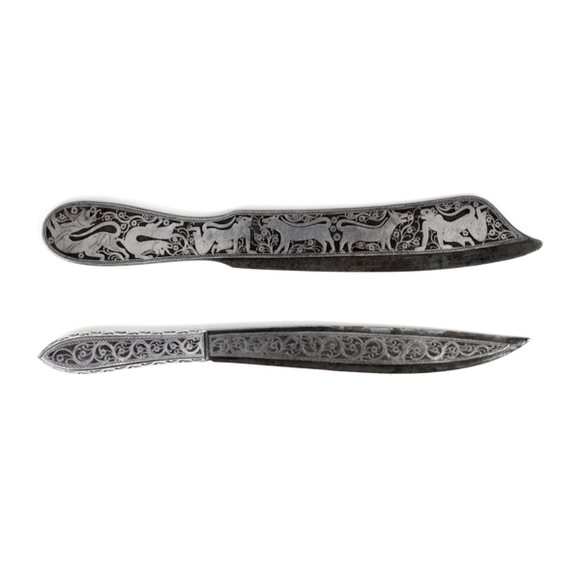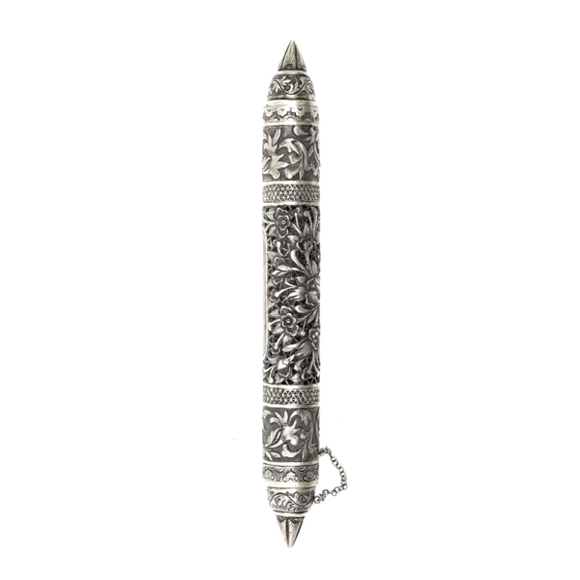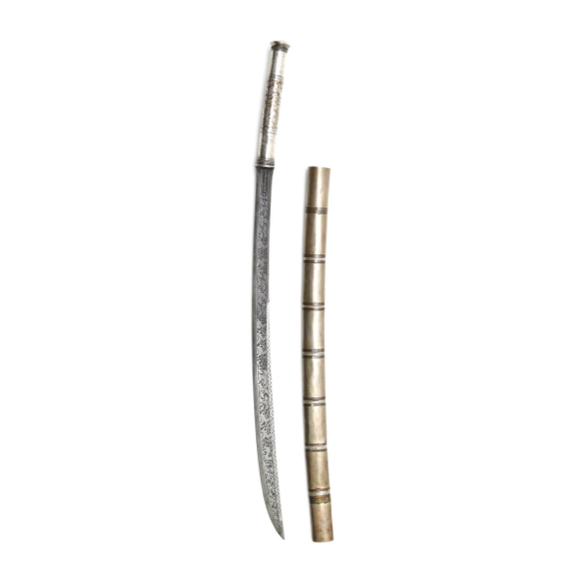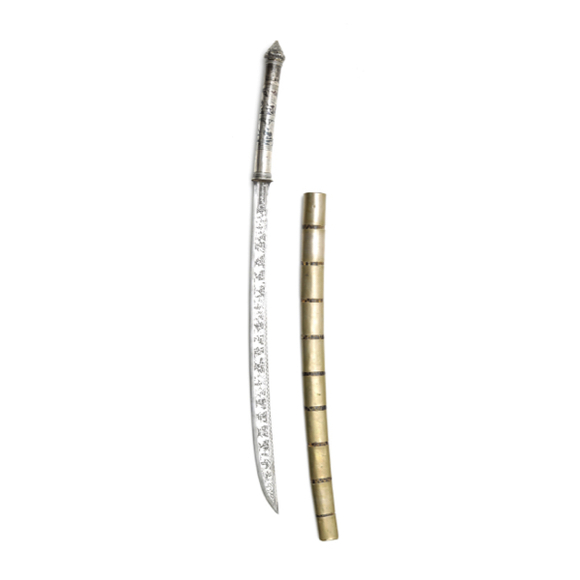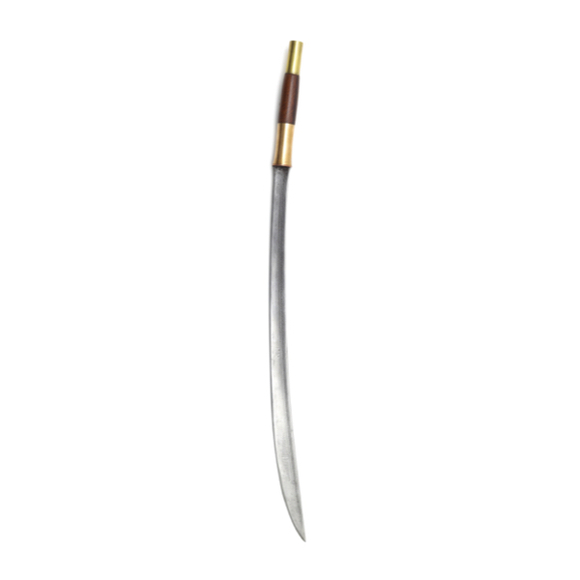Very rare set of Burmese knives from Mindan village.

24.9 cm
Overall 22.8 cm
Blade 13.4 cm
5 mm at base
Weight 81 grams
P.o.b. 5 mm from base
Overall 22 cm
Blade 12.6 cm
4.5 mm at base
Weight 75 grams
P.o.b. at base
Burma, (Myanmar)
Iron, steel, silver, wood, ivory
19th century
The knives have typical Burmese blades with a long back bevel and a shallow but wide groove running down the center of each blade. Blades are in "as found" condition but a polish may reveal at least differential heat treatment and probably also forge folding, as is common on Burmese knives.
The hilts are made of two small pieces of ivory, flat on the inside so the knives fit together tightly in the scabbard. The convex outer sides are carved with peculiar scaly fish with teeth. The top of each handle is reinforced with a silver ferrule, worked in fine detail with Burmese floral patterns.
The scabbard is made of dark hardwood, held together by three silver bands that are decorated in low relieve with geometric and floral ornamentation. Each knife has its own channel, separated by a wooden wall.
Condition
In very good condition throughout. Some minor denting on the scabbard end piece, some minor edge damage. Splits in the wood of the scabbard. No repairs or losses.
Comparable examples
At this point, three other sets of Burmese double knives are known to me. The Metropolitan Museum, accession number 36.25.817a–c is a simple utilitarian set with plain blades and plain smooth ivory hilts. The set was sold by W. O. Oldman to George Cameron Stone before 1935, and bequeathed to the Metropolitan Museum in 1936.
The Royal Ontaria Museum has another set, under accession number 927.59.5.1. Overall form of blades and hilts are closer to ours, but here the hilts are made of brass with bone plates. 19th century. No provenance is given.
The last set is in the National Museum of Thailand. See photo by Gary Todd on flickr.com.
Conclusion
A very charming set of Burmese double knives, fitting in a single scabbard. The concept was probably inspired by Chinese double swords that often fit in a scabbard just like this.
One wonders what these were for. Judging from the blade geometry they are probably fighting knives or possibly throwing knives.
CITES
To meet the demands of the Convention International Trade of Endangered Species (CITES), this object is sold with an appraisal document from a certified Dutch appraiser of the TMV Federation. Among others, it states that the item is manufactured in the 19th century. The handle is of ivory of the species Elephas Maximus, listed on CITES appendix I.
The item is within article 2 of council regulation EC NO338/97 and within Convention of International Trade of Endangered Species (CITES): The materials were removed from the wild and significantly altered from their natural state well before the date of the convention: June 1st, 1947. It can be freely traded within the EU without a permit and is eligible for a CITES export permit for trade outside of the EU.
Buyers outside of Europe: Beware that it may not be possible to export the item to your country due to restrictions on international ivory trade. CITES sets the minimal restrictions, countries, and states under the convention often maintain further restrictions on top of CITES. I will be happy to advise.









Fine silver overlaid dha made in Mindan village, south of Mandalay, gained fame in the 19th…

